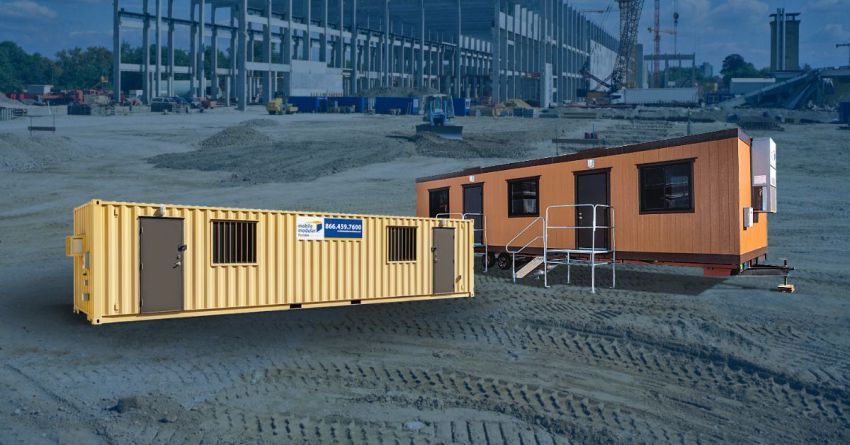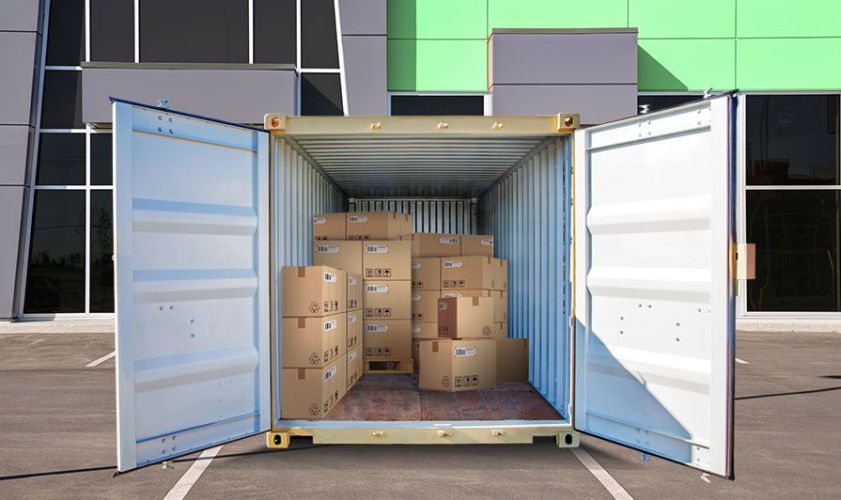- Rent, Lease, or Purchase
- |
June 6, 2019
Seven Ways Manufacturing Facilities Can Improve Productivity
How has productivity changed at your manufacturing plant in the last year? How optimally are your resources being utilized? Is your plan to increase productivity meeting goals as expected?
Manufacturing facilities, more than many other businesses, need to stay on their toes to keep processes efficient. This will not only improve productivity but also ensures equilibrium in the supply and demand cycle.
Driving improvement starts by examining the current practices and introducing improved processes proactively. Here are seven ways to help change the productivity game at your manufacturing facility.
1. Examine Workflows

Examining current processes and identifying pain points is the first step in improving productivity.
It’s important to remember that even small problems can cause big challenges in the long run. You may want to consider having an open conversation with employees about any issues that hinder processes.
Both internal and external issues can affect productivity in your manufacturing units, which means they should both be considered carefully in order to find solutions to both types of issues.
Analyze not just the process, but also the systems, communication, operations, team dynamics, tools, and procurement processes.
Identify and eliminate unnecessary steps to optimize your manufacturing processes.
2. Focus on Data
Don’t get caught up in jargon and vague answers. Answers like, “Our facilities are running well,” or “Our facilities are being used optimally” sounds great, but in reality, that statement does not offer data insights or actionable information.
Get the numbers – learn about turnaround times, and incidents of communication lapses.
Ask questions that reveal specifics, like the number of lost dollars in a project and the cause, or the number of hours spent on tasks where productivity could be improved.
You may want to consider trying a customized ERP system for manufacturing that can collect and handle data without human errors. ERP systems help planning and schedules, and compile comprehensive data on quality and deliveries in one place.
3. Perform Root Cause Analysis (RCA)
Mistakes lead to great lessons – but only if you have done your Root Cause Analysis. Identifying the actual reasons that have caused issues or quality fluctuations is key to achieving better quality scores.
For example, if there is a rise in complaints about damaged packaging, then you need to find the root cause. Is it just because the people who are transporting the products were not being careful? Or could it be because the packaging material needs to be stronger?
There are various RCA analysis methods and tools for manufacturers. If you have been doing RCA just one way, maybe it is time to consider a different RCA approach for your business.
4. Set Clear, Realistic Goals
At times, pressures regarding production, client pressure, and strict deadlines can contribute to building unrealistic goals.
Trying to achieve unrealistic goals invariably leads to pressure on employees, compromises in safety, and lower quality products. This has a long-term effect on employee satisfaction and your brand reputation.
Set realistic goals. Goals that focus on employee satisfaction, enable high-quality outputs, and ensure safe procedures above all else.
Keep your targets clear. This helps identify why exactly goals were not met. Then ask the right questions, (see #2) if you haven’t done so already, to arrive at an actionable solution.
5. Invest in Machinery and Maintenance
Machinery and technology upgrades help manufacturers stay competitive in the market. With better equipment, the work is done faster and result in higher quality.
Keep an eye on modernized machinery in the market and invest in machinery that has proven impact on work floor productivity.
Regularly maintained machinery and better productivity are inextricably connected. Maintenance ensures that machines are working at optimal levels. It is important that your employees know how to troubleshoot in real time and understand the steps to identify root causes. This aspect, along with regular maintenance, can help manufacturing facilities maintain consistent productivity levels.
Leverage Artificial Intelligence (AI) technology and Robotic Process Automation (RPA), where it’s possible to make workflows smooth, error-free, and efficient. Make sure you consider costs and other major factors at the outset and determine if your processes really require a change.
6. Train Your Workforce
Your workforce directly drives productivity. Make sure they remain highly skilled and up to date on best practices and safety methods.
Organize skill training programs to educate your workers more about their current role and to help them better understand goals.
Cross-train your employees in various jobs to ensure that processes don’t slow down due to events like unexpected absences. Cross-skill training is essential as it helps ensure uninterrupted, flexible continuity.
7. Organize Inventory and Delivery
Lean production principles focus on minimizing waste while also maximizing productivity. Sometimes common causes of waste are hiding in plain sight - unnecessary transportation, waiting time for material or people, and idle equipment.
Imagine you get an unexpected order of 200 crates of cans - and you don’t have enough raw material! It’s a big order - you obviously don’t want to miss out. But, your inventory is not in place, and you require extra aluminum immediately to start production. If you had those aluminum rolls at your site, you could have avoided both delay and additional cost of transportation.
You can manage unexpected orders by partnering with commercial storage solution providers. Renting shipping containers, for instance, can be used to store surplus raw material, to keep surplus machinery secure, or to store finished products. Solutions like portable shipping containers can help your business avoid delays and unnecessary transportation.
At Mobile Modular Portable Storage, we understand the importance of lean production and productivity. We have worked with numerous industries to create quick, exceptional experiences in delivering secure, commercial storage.
Our containers come in various sizes and are available for both rent and sale, and are typically delivered in one business day, thereby helping you save time - and money.
If you are looking for high-quality shipping containers for storage, office space and other applications, get in touch with us. Call 866-459-7600 or request a quote today.
Related Blogs



Subscribe to Our Blog
Enter your email address to subscribe to the blog and receive the notification of new posts by email.
Thank You for Subscribing to Our Blog!
Stay tuned for upcoming emails with valuable content that we hope will enhance your experience with our brand.
Both Pardot and mg360 form submissions failed.
